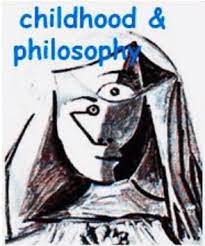Every day, we are bombarded with an endless array of experiences, thoughts, and emotions. Amidst this constant fluctuation, one might wonder how we manage to make sense of the world around us. The answer lies in the process of making meaning. In today’s article, we will explore the concept of making meaning, its psychological implications, and how you can cultivate a meaningful life.
Making meaning is a fundamental human desire; it drives us to seek understanding, order, and purpose in our lives. This powerful force propels us to create personal narratives or stories that help us navigate through life’s complexities. These stories provide us with connection points that feed into our values, beliefs, and identity.
Three popular psychological theories offer valuable insights into the process of making meaning:
1. Logotherapy: Developed by psychiatrist Viktor Frankl, logotherapy is an existential therapeutic approach centered on the idea that the primary motivation in life is to find meaning. Frankl established three ways in which we can create meaning:
– Through purposeful work or creative endeavors
– Through relationships or interactions with others
– By adopting an attitude of resilience amidst adversity
2. Constructivism: Rooted in the field of cognitive psychology, constructivism posits that individuals actively create their understanding of reality through mental processes that organize and interpret information from their environment. This approach suggests that we continually refine and reshape our narrative based on new experiences and information.
3. Narrative Therapy: Pioneered by Michael White and David Epston, narrative therapy is a collaborative therapeutic approach that helps clients identify and modify the stories they use to define themselves and their lives. By externalizing problems and identifying alternative narratives, clients can gain valuable perspectives on their challenges.
With these psychological concepts as a foundation, here are some practical tips for cultivating a meaningful life:
1. Reflect on your values: Identify what is truly important to you, and strive to align your actions and decisions with those values.
2. Embrace connection: Engage in activities that cultivate relationships, empower communities, and enrich the lives of others.
3. Pursue growth: Continually learn and upskill yourself in various areas of life, pushing your limits and expanding your horizons.
4. Stay open-minded: Embrace change, adapt when necessary, and continually reassess your personal narrative and interpretations of experiences.
5. Nurture resilience: Accept that adversity is an inevitable part of life, and cultivate the mental resources to overcome them with grace, perseverance, and adaptive coping strategies.
In conclusion, making meaning requires us to be active participants in our lives — continuously processing information, retaining a sense of curiosity, engaging with others, and maintaining flexibility in our mindset. By embracing these habits and staying true to our values, we can create a life that is both rich in significance and deeply fulfilling.






